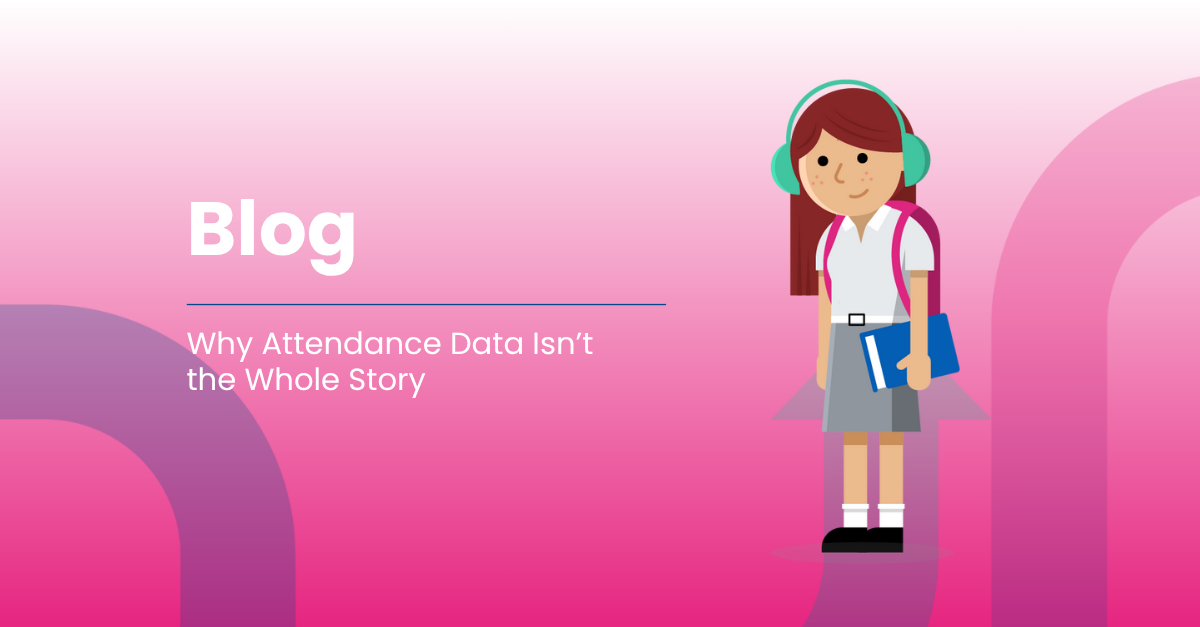Why Attendance Data Isn’t the Whole Story
Every headteacher knows the feeling. They’re staring at an attendance dashboard filled with red and amber alerts. But while the numbers may tell you who’s missing, they rarely tell you why.
Now the news would have you believe it’s because parents are off investigating the world and taking their children with them… But the Pupil Pathways team knows it’s more than just this small percentage. Some children just struggle with school.
They could be navigating a world that feels too loud, too fast, or too uncertain. And then there is the child who may be tired, anxious, or masking something deeper than the data reveals.
As parents, we see this side of the story too.
When “not wanting to go” means something more
Rachel, Marketing Director at Pupil Pathways, tells us her own parenting story.
My own son is neurodivergent. He’s intelligent, funny, curious and sometimes, completely overwhelmed.
There are mornings when his nursery bag stays unpacked because his brain just can’t face the sensory overload ahead. It’s not about defiance, or a lack of routine, it’s simply that in those moments the world feels like too much.
When he starts primary school in September 2026, I know his teachers will need to understand this. Not from a place of pity or punishment, but from empathy and preparation.
Because when a child like mine doesn’t walk through the school gates, it’s not a behavioural issue, it’s a communication one. His brain is saying, “I need help to feel safe enough to learn.”
And that’s the part that data alone can’t capture. As a parent, there will be some days he just isn’t going to attend school, and I am okay with that. Because as his mum, I know he will mask the problems when in reality he just needs some semblance of normality to face the next day.
Seeing the child, not just the absence
Across the country, schools and local authorities are grappling with the same challenge; persistent absence, growing anxiety, and complex needs that don’t fit into neat categories.
The danger is that attendance becomes a number to chase, rather than a story to understand.
Pupil Pathways’ Foresight solution is helping local authorities change that.
By bringing together attendance, safeguarding, and behavioural insights, it gives professionals a complete picture of what’s really happening for each child.
That means when a pupil stops showing up, schools can quickly see the context; family stress, housing insecurity, friendship struggles, undiagnosed neurodiversity and intervene with compassion instead of consequence.
It turns “Why aren’t they here?” into “What’s getting in the way?”
From compliance to connection
Attendance shouldn’t be a compliance exercise; it should be a connection strategy. When schools and services work together through a shared digital record, early intervention becomes proactive, not reactive.
We’ve seen this in action in the London Borough of Barking & Dagenham, where the local authority is using Foresight to deliver its Best Chance in Life strategy. By connecting school and LA data, practitioners can spot vulnerable children sooner, reduce suspensions, and rebuild attendance through trust and targeted support.
Because absence isn’t just a gap in the register, it’s a signal. And when professionals are equipped with the full story, they can respond before that signal turns into long-term disengagement.
Changing outcomes by changing perspective
As a parent, I know the power of being seen and understood. When my son’s educators recognise that his “off days” aren’t laziness but overload, it changes everything about how they support him.
As professionals, we owe that same understanding to every child, especially those whose struggles are invisible until absence becomes the only way they can cope.
Foresight helps make that understanding possible. It turns fragmented information into a shared view that empowers early help, inclusion, and belonging.
Because before you can fix attendance, you have to understand absence.
